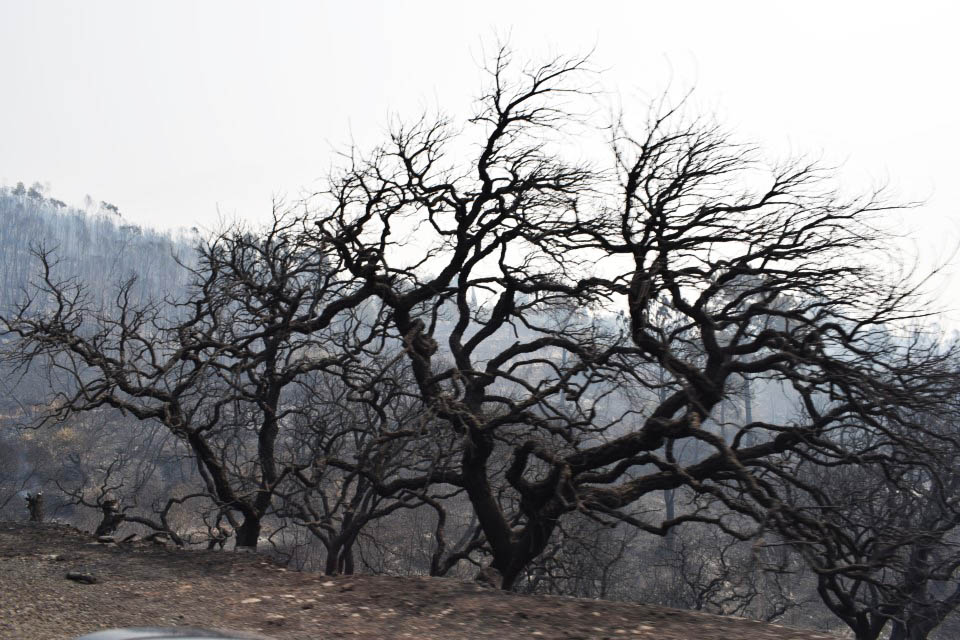The challenge of efficiently managing the fire risk involves “spending less money per burnt area”, contrary to the idea of “erasing everything and at all costs”, considers the Integrated Management of Rural Fires Agency (AGIF).
“The money that exists, the fleet of planes and firefighters and resources dedicated to combat is sufficient, no more is needed. Perhaps, with a study that supports this management, savings in this matter must be considered, so that these savings can promote the efficient management of risk ”, stated the president of AGIF, Tiago Oliveira, in an interview with the Lusa agency.
For the forestry engineer, specialized in fire risk management and governance, “it is not necessary to go to all fires with all the resources”, which implies flexibility to manage the risk, namely in the most critical days having the ability to “choose what are the fires that cannot progress in a certain way and attack these fires as a priority ”.
“This implies assessing the risk, estimating the value, determining the risk, carrying out a sensitivity analysis and choosing which are the fires that are critical”, said Tiago Oliveira, explaining that, on the cooler days, especially in the winter, “there are fires that do not produce great harm and that do not threaten value ”, even contributing to burn the forest mosaic and promote some natural regeneration in a more interesting way.
“The culture of suppression, putting everything out and at all costs brought us here: we were able to put out all the fires, but by putting out the fire in the short term we are also allowing the vegetation to grow, creating a more serious problem in the future ”, warned the president of AGIF, considering that a balance is needed, putting the fire to work in the forest during the winter, that“ be a good servant, not to be a bad boss during the summer ”.
With the objective of “spending less money per burnt area, spending less money per protected hectare”, efficient risk management implies knowledge, rewarding structures that make “better, cheaper and more efficient”, manage resources and motivate them. them to achieve results.
Within the scope of the National Action Program (PNA) of the National Plan for the Integrated Management of Rural Fires (PNGIFR), with the horizon of 2020-2030 and a total budget of around 7.000 billion euros, AGIF proposes that “of the investment that Portugal dedicates 57% to fire risk management, go to prevention ”, when in 2017 it was 20%.
Tiago Oliveira said that, in 2020, 50% of the budget was destined to prevent these occurrences.
"It is a transition to a more preventive culture, with the consequent investment in this area", he reinforced.
On the recent announcement by the Government of the acquisition of 14 aerial means of combating rural fires by 2026, in an investment of 156 million euros, the president of AGIF noted that Portugal will only spend 10% of the State Budget, because the remaining amount is financing from the Recovery and Resilience Instrument (IRR).
“An economic advantage is achieved and it generates savings, because it allows freeing the State Budget for other areas. Will you ask me what is the economic efficiency of the IRR's investment in means of combat? Portugal needs to have a certain independence in the management of the device. I am confident that the Air Force will be able to manage combat resources in a more efficient way, so I think it will be able to reduce combat costs in the medium term and we will have our own fleet, complemented in the summer in peaks using contracts , which will cost less in the medium term ”, said Tiago Oliveira.
Regarding the impact of the Covid-19 pandemic in preventing and fighting fires, the forestry engineer said that, as in 2020, the works will continue to be ensured, with compliance with sanitary measures, without any major constraints, including “the number of hectares treated increased, at least for public and private entities, and there was a capacity to reduce the number of ignitions”.
“This year, with vaccination, from the perspective of combat troops, it is not considered a major problem. There is always this issue, careful planning has to be done, but the forces are dealing with it”, explained the AGIF president, adding that, as for the fuel management activity, the deadline was extended to May 15, for allow landowners to secure land clearance.



















Comments